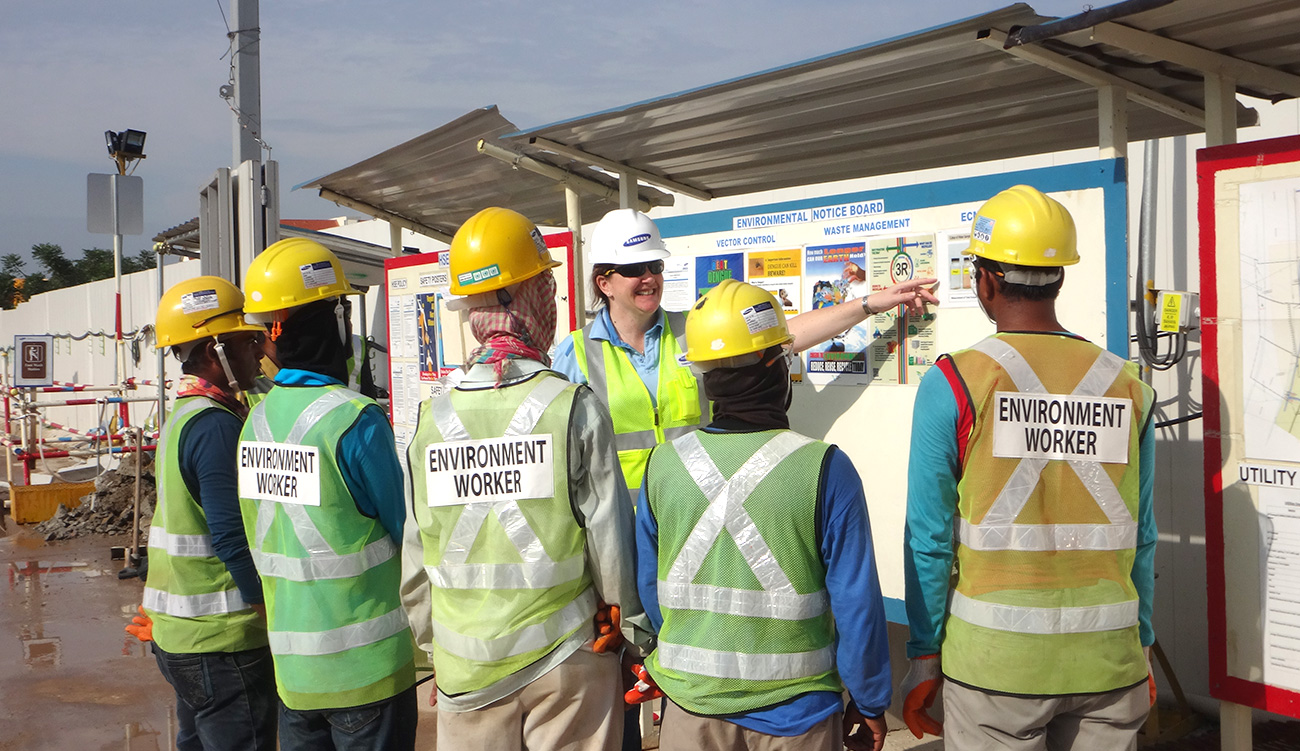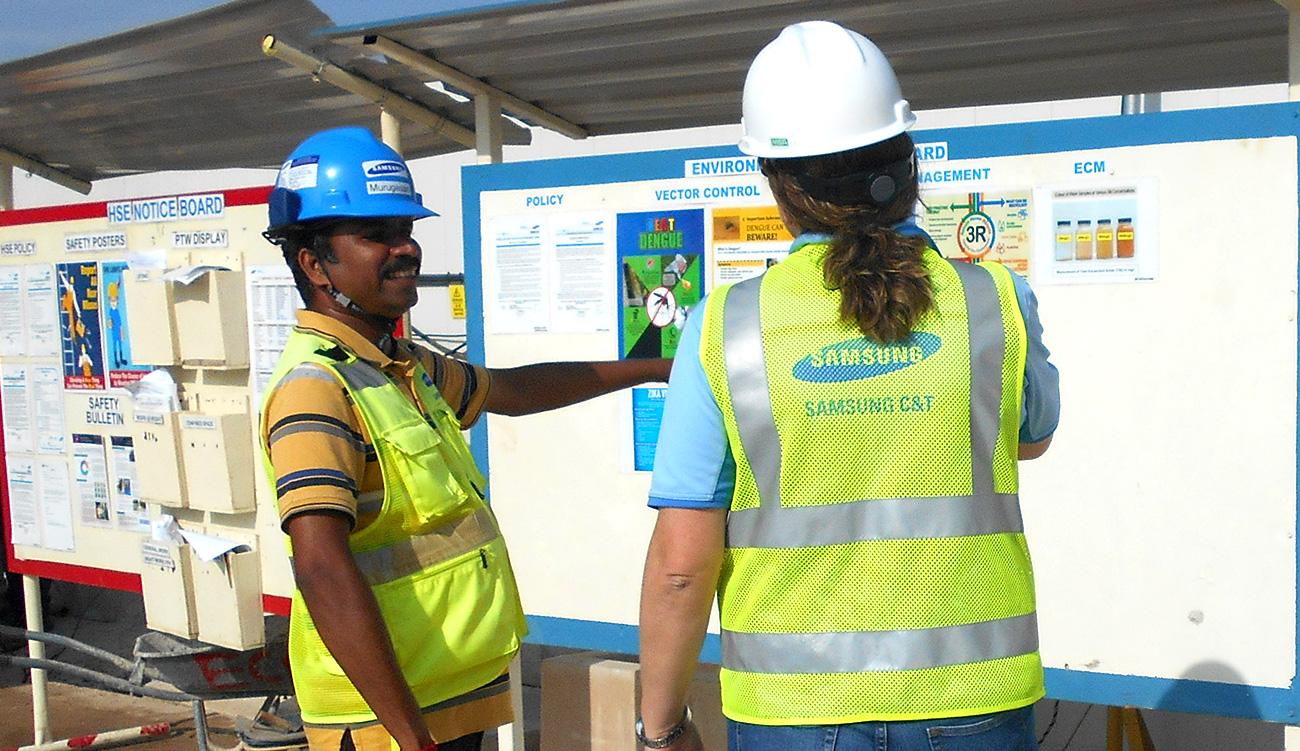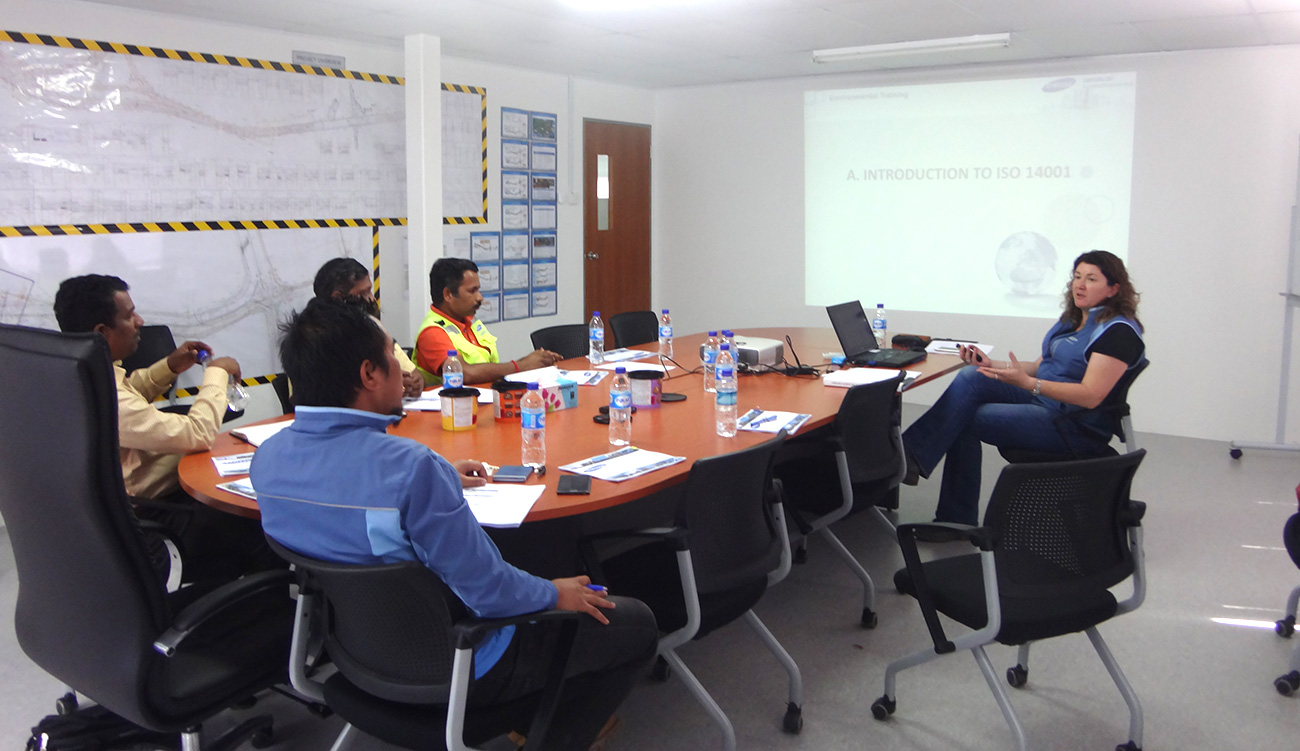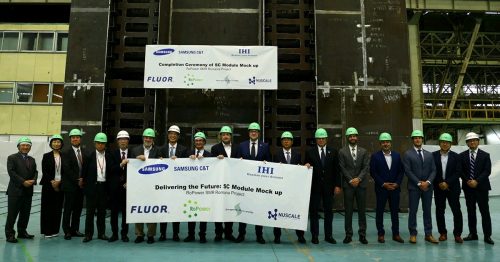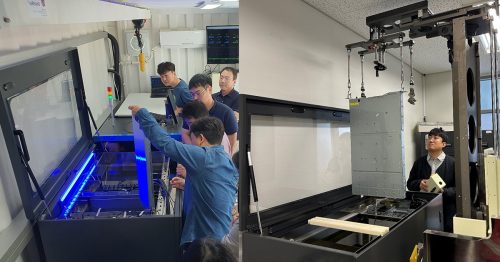Note: Who makes up the diverse and talented team at Samsung C&T? This is the latest in a series of articles on the Samsung C&T Newsroom that delves into the work lives of some of the company’s brightest members, taking a glimpse into the process behind various noteworthy projects. Previously in the series, Samsung C&T Newsroom has looked at the work life of a Head Suit Maker.
In the 1960s, the US government created the ground-breaking Environmental Protection Agency in response to public concern about the impact of industry on the planet. Ever since, environmental matters have found themselves ranking high on policy agendas all over the world. Most countries now have strict legislation to protect the environment.
The change can even be felt at a regional level. Local authorities everywhere now insist that developers minimize the environmental impact of construction. Construction companies, meanwhile, have responded by gathering their own teams of environmental experts. At Samsung C&T, these include people like Caroline Vickers, Global Environmental Manager in the company’s Civil Business Unit.
Read on to find out how modern environmental managers like Caroline aim to create a sustainable, responsible future for the business.
Samsung C&T Newsroom: What does an environmental manager do?
Caroline Vickers: Environmental managers are responsible for overseeing the environmental performance of projects. We develop, implement and monitor strategies, policies and programs to manage the environmental elements of a project. Being an environmental manager means not just thinking about nature, but also about people. The first thing that comes to mind when you think of pollution is probably emissions and spills. But when you build in a residential area, there are also people to bear in mind. For example, noise pollution, dust and vibration need to be taken into consideration.
Newsroom: Construction sites are notoriously loud places. How do you go about regulating noise?
Caroline Vickers: The first step in managing noise is to review the construction methods and equipment to see if there are quieter options that can be used. There are technological solutions that can help. These include silent generators for on-site power production, and silent piling rigs. We can also adjust the site layout to avoid siting the noisiest equipment close to houses, schools and so on. But it can also be a matter of educating staff to, for example, put tools and materials down gently rather than dropping them. Little things like that can make a big difference.
Newsroom: How do you begin work on a project?
Caroline Vickers: When developers begin on a project, local authorities request an environmental impact assessment report. That’s my starting point. The environmental impact report is key for us as it includes all the environmental monitoring that has been conducted for air, noise, water, soil, archaeology, ecology and more. I review the requirements and develop the construction environmental management plan for the project. This plan is the document that details all of the environmental requirements for the project – what we are going to do. Then I go about finding the right people to deal with on-site environmental management for the project and train the environmental site staff. I follow this up with regular audits to check that everyone is on track with the project’s environmental requirements – and that we’re doing what we said we’d do!
Newsroom: How do you go about avoiding damaging animal habitats?
Caroline Vickers: That can vary a lot. Early involvement of environmental professionals in a project is essential. It lets us make practical decisions that help avoid damage to animal habitats. Environmental managers take great care to cause as little disturbance to wildlife as possible. For example, on a rail project I once worked on in the Middle East, we devised underpasses that would let camels and gazelles pass beneath the tracks. Embankments and fences stopped the animals from straying onto the tracks.
Newsroom: What kind of things happen on-site that might call for an environmental manager’s help?
Caroline Vickers: There are a wide variety of issues that can occur on construction sites. If, for example, we had an issue with a water treatment plant that risked polluting a nearby watercourse, we would take an active role in helping resolve the problem. We’d typically advise project managers and construction managers to find additional treatment methods. We’d want them to make sure they meet local requirements before discharging any water from the construction site.
But sometimes people get in touch with me with very unexpected enquiries. On one project I was working on in my native UK, the construction team unearthed unusual cobbled stonework buried deep beneath the building site. Archeological experts were called in and we eventually discovered that we had unearthed the remains of a 16th-century farm.
Newsroom: What is the most enjoyable aspect of your job?
Caroline Vickers: It is great to be able to change things for the better. Construction can cause disruption, but helping people build in an environmentally conscious way is very fulfilling. It is often the case that the managers I train take what I say seriously and genuinely care about the environment. Hopefully they can take what they have learned and use that knowledge on other construction projects – and then train the next generation of environmental managers.
Newsroom: How have things changed for the better in recent years?
Caroline Vickers: Developers are a lot more environmentally aware than they once were. Some of the greatest challenges of our time are climate change, resource depletion and pollution. These issues are being acknowledged in the construction industry. Builders now realize that reducing energy consumption is essential in the industry. There is a big push towards using more sustainable construction materials.
Newsroom: What do environmental managers hope to achieve in the future?
Caroline Vickers: We are trying to promote a culture of sustainability within the industry and therefore contribute to a more sustainable future. This extends not only to the cost and environmental impacts of a project, but also to its social impact. That can include sourcing construction materials – and even staff – locally. This supports local economies and is a great way of giving back to the community. If sustainability is considered at the start of construction projects, it can provide better value for money in the long term!


